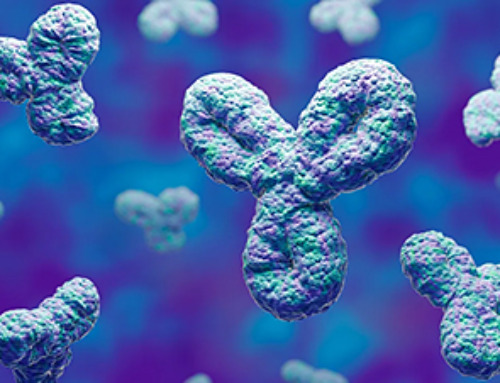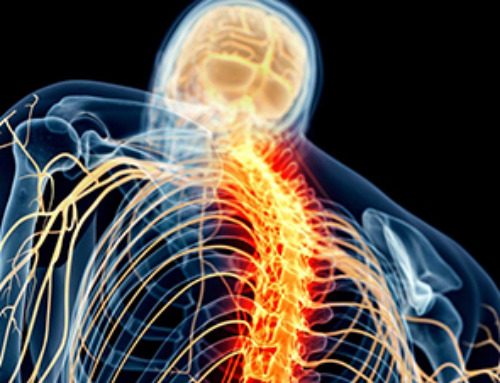From a new article in the New York Times:
New antiviral drugs are startlingly effective against the coronavirus—if they’re taken in time.
n March, 2020, researchers at Emory University published a paper about a molecule called NHC/EIDD-2801. At the time, there were no treatments available for the coronavirus. But NHC/EIDD-2801, the researchers wrote, possessed “potency against multiple coronaviruses,” and could become “an effective antiviral against SARS-CoV-2.” A few days later, Emory licensed the molecule to Ridgeback Biotherapeutics, a Miami-based biotechnology company which had previously developed a monoclonal antibody for Ebola. Ridgeback partnered with the pharmaceutical giant Merck to accelerate its development.
The Emory researchers named their drug molnupiravir, after Mjölnir—the hammer of Thor. It turns out that this was not hyperbole. Last month, Merck and Ridgeback announced that molnupiravir could reduce by half the chances that a person infected by the coronavirus would need to be hospitalized. The drug was so overwhelmingly effective that an independent committee asked the researchers to stop their Phase III trial early—it would have been unethical to continue giving participants placebos. None of the nearly four hundred patients who received molnupiravir in the trial went on to die, and the drug had no major side effects. On November 4th, the U.K. became the first country to approve molnupiravir; many observers expect that an emergency-use authorization will come from the U.S. Food and Drug Administration in December.
Oral antivirals like molnupiravir could transform the treatment of covid-19, and of the pandemic more generally. Currently, treatments aimed at fighting covid—mainly monoclonal antibodies and antiviral drugs like remdesivir—are given through infusion or injection, usually in clinics or hospitals. By the time people manage to arrange a visit, they are often too sick to receive much benefit. Molnupiravir, however, is a little orange pill. A person might wake up, feel unwell, get a rapid covid test, and head to the pharmacy around the corner to pick up a pack. A full course, which needs to start within five days of the appearance of symptoms, consists of forty pills—four capsules taken twice a day, for five days. Merck is now testing whether molnupiravir can prevent not just hospitalization after infection but also infection after exposure. If that’s the case, then the drug might be taken prophylactically—you could get a prescription when someone in your household tests positive, even if you haven’t.
Molnupiravir is—and is likely to remain—effective against all the major coronavirus variants. In fact, at least in the lab, it works against any number of RNA viruses besides sars-CoV-2, including Ebola, hepatitis C, R.S.V., and norovirus. Instead of targeting the coronavirus’s spike protein, as vaccine-generated antibodies do, molnupiravir attacks the virus’s basic replication machinery. The spike protein mutates over time, but the replication machinery is mostly set in stone, and compromising that would make it hard for the virus to evolve resistance. Once it’s inside the body, molnupiravir breaks down into a molecule called NHC. As my colleague Matthew Hutson explained, in a piece about antiviral drugs published last year, NHC is similar to cytosine, one of the four “bases” from which viral RNA is constructed; when the coronavirus’s RNA begins to copy itself, it slips into cytosine’s spot, in a kind of “Freaky Friday” swap. The molecule evades the virus’s genetic proofreading mechanisms and wreaks havoc, pairing with other bases, introducing a bevy of errors, and ultimately crashing the system.
With winter approaching, America is entering another precarious moment in the pandemic. Coronavirus cases have spiked in many European countries—including some with higher vaccination rates than the U.S.—and some American hospitals are already starting to buckle under the weight of a new wave. Nearly fifty thousand Americans are currently hospitalized with covid-19. It seems like molnupiravir is arriving just when we need it.
It isn’t the only antiviral covid pill, either. A day after the U.K. authorized Merck’s drug, Pfizer announced that its antiviral, Paxlovid, was also staggeringly effective at preventing the progression of covid-19 in high-risk patients. The drug, when taken within three days of the onset of symptoms, reduced the risk of hospitalization by nearly ninety per cent. Only three of the nearly four hundred people who took Paxlovid were hospitalized, and no one died; in the placebo group, there were twenty-seven hospitalizations and seven deaths. Paxlovid is administered along with another antiviral medication called ritonavir, which slows the rate at which the former drug is broken down by the body. Like Merck, Pfizer is now examining whether Paxlovid can also be used to prevent infections after an exposure. Results are expected early in 2022. (It’s not yet known how much of a difference the drugs will make for vaccinated individuals suffering from breakthrough infections; Merck’s and Pfizer’s trials included only unvaccinated people with risk factors for severe disease, such as obesity, diabetes, or older age. Vaccinated individuals are already much less likely to be hospitalized or die of covid-19.)
News
Specially engineered antibody delivers RNA therapy to treatment-resistant tumors
Elias Quijano, PhD; Diana Martinez-Saucedo, PhD; Zaira Ianniello, PhD; and Natasha Pinto-Medici, PhD, there are 25 other contributors, most from Yale's Department of Therapeutic Radiology and from the departments of genetics, molecular biophysics and [...]
Vaccinated women face fewer cervical cancer risks
New data from Denmark shows the HPV vaccine’s powerful long-term impact, while also revealing why cervical cancer screening is still essential. A Danish study published in the journal Eurosurveillance reports that women who received the human [...]
3D-printed implant offers a potential new route to repair spinal cord injuries
A research team at RCSI University of Medicine and Health Sciences has developed a 3-D printed implant to deliver electrical stimulation to injured areas of the spinal cord, offering a potential new route to [...]
Nanocrystals Carrying Radioisotopes Offer New Hope for Cancer Treatment
The Science Scientists have developed tiny nanocrystal particles made up of isotopes of the elements lanthanum, vanadium, and oxygen for use in treating cancer. These crystals are smaller than many microbes and can carry isotopes of [...]
New Once-a-Week Shot Promises Life-Changing Relief for Parkinson’s Patients
A once-a-week shot from Australian scientists could spare people with Parkinson’s the grind of taking pills several times a day. The tiny, biodegradable gel sits under the skin and releases steady doses of two [...]
Weekly injectable drug offers hope for Parkinson’s patients
A new weekly injectable drug could transform the lives of more than eight million people living with Parkinson's disease, potentially replacing the need for multiple daily tablets. Scientists from the University of South Australia [...]
Most Plastic in the Ocean Is Invisible—And Deadly
Nanoplastics—particles smaller than a human hair—can pass through cell walls and enter the food web. New research suggest 27 million metric tons of nanoplastics are spread across just the top layer of the North [...]
Repurposed drugs could calm the immune system’s response to nanomedicine
An international study led by researchers at the University of Colorado Anschutz Medical Campus has identified a promising strategy to enhance the safety of nanomedicines, advanced therapies often used in cancer and vaccine treatments, [...]
Nano-Enhanced Hydrogel Strategies for Cartilage Repair
A recent article in Engineering describes the development of a protein-based nanocomposite hydrogel designed to deliver two therapeutic agents—dexamethasone (Dex) and kartogenin (KGN)—to support cartilage repair. The hydrogel is engineered to modulate immune responses and promote [...]
New Cancer Drug Blocks Tumors Without Debilitating Side Effects
A new drug targets RAS-PI3Kα pathways without harmful side effects. It was developed using high-performance computing and AI. A new cancer drug candidate, developed through a collaboration between Lawrence Livermore National Laboratory (LLNL), BridgeBio Oncology [...]
Scientists Are Pretty Close to Replicating the First Thing That Ever Lived
For 400 million years, a leading hypothesis claims, Earth was an “RNA World,” meaning that life must’ve first replicated from RNA before the arrival of proteins and DNA. Unfortunately, scientists have failed to find [...]
Why ‘Peniaphobia’ Is Exploding Among Young People (And Why We Should Be Concerned)
An insidious illness is taking hold among a growing proportion of young people. Little known to the general public, peniaphobia—the fear of becoming poor—is gaining ground among teens and young adults. Discover the causes [...]
Team finds flawed data in recent study relevant to coronavirus antiviral development
The COVID pandemic illustrated how urgently we need antiviral medications capable of treating coronavirus infections. To aid this effort, researchers quickly homed in on part of SARS-CoV-2's molecular structure known as the NiRAN domain—an [...]
Drug-Coated Neural Implants Reduce Immune Rejection
Summary: A new study shows that coating neural prosthetic implants with the anti-inflammatory drug dexamethasone helps reduce the body’s immune response and scar tissue formation. This strategy enhances the long-term performance and stability of electrodes [...]
Scientists discover cancer-fighting bacteria that ‘soak up’ forever chemicals in the body
A family of healthy bacteria may help 'soak up' toxic forever chemicals in the body, warding off their cancerous effects. Forever chemicals, also known as PFAS (per- and polyfluoroalkyl substances), are toxic chemicals that [...]
Johns Hopkins Researchers Uncover a New Way To Kill Cancer Cells
A new study reveals that blocking ribosomal RNA production rewires cancer cell behavior and could help treat genetically unstable tumors. Researchers at the Johns Hopkins Kimmel Cancer Center and the Department of Radiation Oncology and Molecular [...]





















